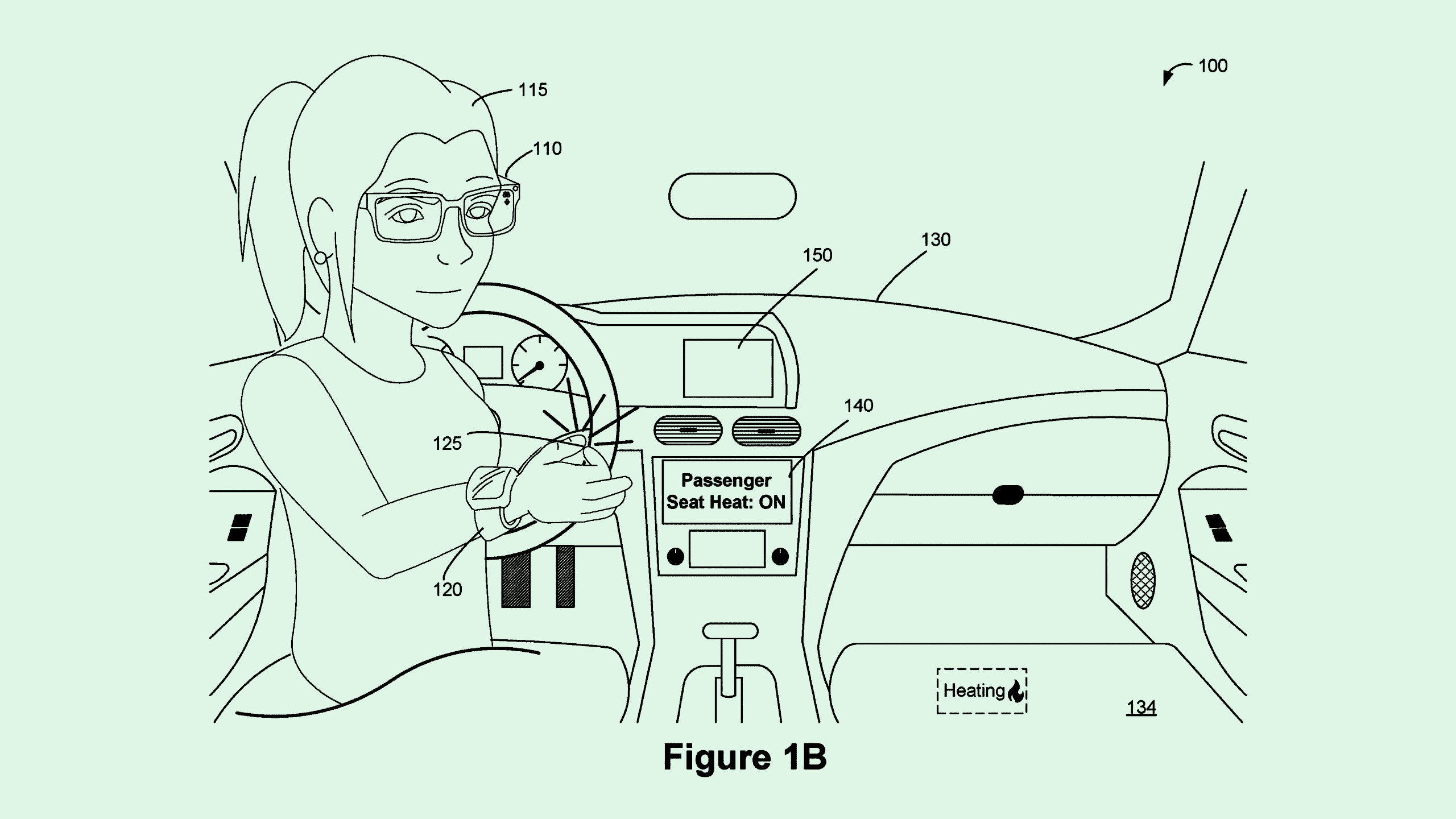Meta Could Face Cost Obstacles in AR Glasses Goals
Though artificial reality took center stage at Meta Connect, the company faces headwinds in making AR glasses an everyday reality.

Sign up to uncover the latest in emerging technology.
Meta wants you to be aware of your surroundings. The company filed several patents that detail ways in which artificial reality glasses and devices can interact with the world around you.
For starters, the company is seeking to patent a way to modify sound outputs “in response to determining a shift in attention.” This tech tracks a user’s gaze and alerts them when they’re not paying the necessary attention to tasks, such as driving or a video call.
“The individual who is driving may take a wrong turn or get into an accident, while the individual who is on the video conference may be less productive, lose a client, or be disciplined by their employer,” Meta said in the filing.
To recapture the attention of wandering eyes, Meta’s tech uses gaze-tracking sensors built into headsets, coupled with audio sensors that detect sound in the user’s environment, to determine where they are looking. If it detects that a user’s attention has shifted, the system will adjust the sound output by playing an alert or adjusting volume levels. The system may also provide haptic feedback, like vibration, through a smartwatch.
In addition to keeping users from crashing, Meta may want its tech to couple with cars: The company filed a patent for “EMG-based control for interacting with vehicles.” This combines the abilities of a smartwatch and smart glasses to pick up signals that control vehicle actions, such as changing the song or turning on the AC.
Similar to the previous patent, the tech’s goal is to reduce distraction, Meta said, and to allow the driver to “interact with their vehicle in an easy to use, frictionless, and socially accepted manner.”
Artificial reality is taking center-stage at Meta Connect this week. The company announced a new wireless virtual reality headset, the Quest 3S, as a cheaper alternative to the rest of the Quest line, and shared an upgrade to its Ray-Ban smart glasses, offering real-time AI video processing, reminders, and language translation.
The company also teased a “fully functional” prototype of its AR glasses, dubbed Project Orion, which CEO Mark Zuckerberg has called “the most advanced AR glasses the world has ever seen.” The glasses are operated via voice prompts and a wristband.
“From Ray-Ban Meta glasses to Orion, we’ve seen the good that can come from letting people stay more present and empowered in the physical world, while tapping into all that the digital world has to offer,” Meta wrote in its announcement.
While tech like this is hardly a surprise coming from Meta, these patents highlight that the company’s vision for AR lies in the real world, said Jake Maymar, AI strategist at The Glimpse Group. While a lot of the company’s focus is on virtual reality headsets for entertainment, “the end goal is AR, not VR,” said Maymar. “VR is a very lonely place.”
But Meta may face a number of hurdles in reaching that goal, said Maymar. In terms of the engineering, creating AR glasses that are long-lasting, fashionable, and work well is a difficult task. While components are gradually getting cheaper, smaller, and more efficient, he said, that full realization at scale is still realistically a few years out.
The company also lacks the infrastructure that another competitor, namely Apple, has aplenty. Should AR glasses be part of Apple’s vision, the iPhone maker has the benefit of being in everyone’s pocket, plus robust cloud technology, and a sticky device ecosystem, Maymar said. Meta, meanwhile, doesn’t have those luxuries.
“Meta’s devices are all disparate technologies,” he said. “Whereas with Apple … it’s all nicely integrated. Meta needs that.”
Then, of course, there’s the consumer. Getting the retail price down to something that an average consumer would willingly pay adds another obstacle, he said. Project Orion reportedly cost roughly $10,000 per unit to create. “I don’t know if the technology exists where it can be affordable.”











